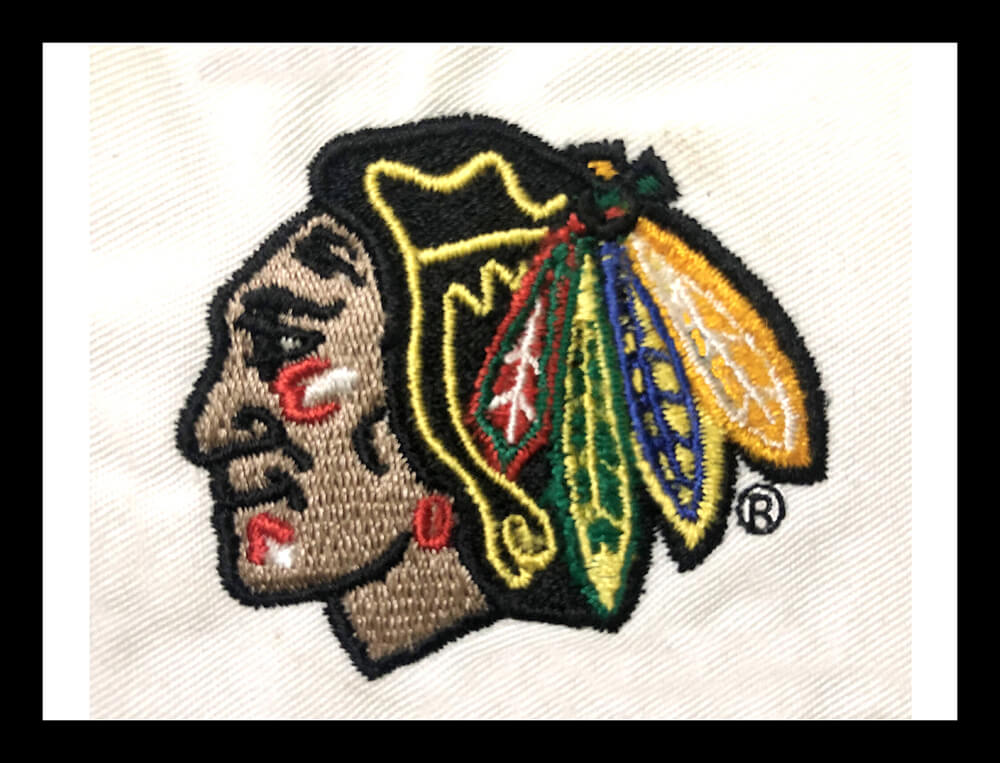Reliable Digitizing for Embroidery: Quick Turn-around
Reliable Digitizing for Embroidery: Quick Turn-around
Blog Article
Streamlining the Art of Needlework Digitizing: Step-by-Step Guide
Embroidery digitizing is a precise craft that demands precision and creativity. As modern technology remains to development, the digitization process has become extra obtainable, enabling lovers to bring their elaborate designs to life effortlessly. In this guide, we will untangle the intricacies of embroidery digitizing, breaking down each step methodically to improve the procedure and encourage both newbies and skilled embroiderers alike. Stay tuned to uncover how you can streamline this detailed art kind and change your imaginative visions into perfectly stitched work of arts.
Comprehending Needlework Digitizing Software
Embroidery digitizing software program offers as a crucial tool for transforming detailed layouts into electronic styles compatible with needlework machines, promoting accurate sewing and modification. This specialized software application permits users to import different picture data layouts, such as JPG or PNG, and transform them right into needlework machine-readable styles like DST, EXP, or PES - Digitizing for Embroidery. By utilizing functions like stitch editing and enhancing, underlay choices, and thread color option, digitizing software allows individuals to regulate every facet of the layout procedure
Moreover, advanced embroidery digitizing software application uses devices for developing complex styles, readjusting stitch thickness, and incorporating complex information. Users can likewise sneak peek the layout before stitching it out, making sure accuracy and reducing errors. Furthermore, numerous software application programs supply automated attributes that aid simplify the digitizing procedure, conserving time and initiative.
Recognizing the capabilities of needlework digitizing software program is vital for accomplishing high-quality lead to embroidery jobs. By grasping this device, needlework fanatics and professionals can unleash their creativity and bring intricate styles to life with precision and effectiveness.

Selecting the Right Design File
After acquainting on your own with the capacities of needlework digitizing software program, the next important step in the process is picking the appropriate style data for your project. Digitizing for Embroidery. When choosing a layout documents for embroidery digitizing, it's vital to consider the complexity of the design, the dimension of the last product, and the sort of fabric you will be collaborating with
For elaborate designs with great details, a high-resolution image or vector file is advised to guarantee that the needlework equipment can precisely replicate the style. In addition, the size of the end product plays a significant role in picking the appropriate layout documents. Bigger layouts may call for higher resolution files to maintain clearness and sharpness.
Furthermore, the kind of material you will be stitching on influences the option of layout file. Different textiles might require modifications in the layout file to make sure that the stitches are effectively aligned and the style shows up as intended. By meticulously selecting the appropriate design data based upon these aspects, you can set yourself up for a successful embroidery digitizing procedure.
Digitizing Devices and Methods
Using specialized software application and precision methods, digitizing tools are essential in transforming elaborate styles into embroidery-ready documents. Embroidery digitizing software application, such as Wilcom, click here for info Hatch, or Embrilliance, provides the needed system to convert art work into stitch data. These programs provide functions like stitch editing and enhancing, rug choices, and text devices to make certain the layout converts flawlessly onto textile.
Among the vital strategies in digitizing is developing a clear course for the needlework maker to comply with. This entails digitizing each component of the layout with precision, figuring out stitch kinds, thickness, and instructions. By using tools like digitizing tablets or software-specific plugins, embroiderers can accomplish a high degree of precision in their digitized layouts.
Furthermore, mastering the art of padding stitching is essential for creating high quality needlework. Underlay sewing stabilizes the material and develops a foundation for the style, making certain that the final item is both visually enticing and long-lasting. By understanding these digitizing tools and methods, embroiderers can boost their craft and bring intricate styles to life with accuracy and performance.
Personalizing Stitch Kinds and Directions
Having actually established a foundation in digitizing tools and strategies, a critical facet in progressing embroidery workmanship lies in customizing stitch kinds and directions with accuracy and objective. The choice of stitch kinds can dramatically affect the total appearance and appearance of the embroidered layout. Satin stitches, understood for their smooth and shiny coating, work well for developing boundaries and message. On the other hand, fill stitches are suitable for covering larger locations effectively. By strategically integrating visit their website these stitch types, embroiderers can accomplish deepness and measurement in their layouts.
Moreover, the direction of stitches plays an essential function in boosting the visual charm of the final needlework. Diverse stitch directions can include appearance, highlight particular elements, and develop visual interest. Changing the angle of stitches can imitate motion or all-natural patterns like hair or feathers. By trying out various stitch angles and patterns, embroiderers can bring their styles to life with impressive information and ins and out. Mastering the art of customizing stitch kinds and instructions encourages embroiderers to release their creativity and raise the quality of their work.
Screening and Refining Your Digitized Style
To make sure the precision and high quality of your digitized style, detailed screening and improvement are crucial action in the embroidery digitizing process. Once you have completed the digitization of your layout, it is essential to evaluate it before continuing with the real needlework. Checking allows you to identify any prospective issues such as string breaks, sew density troubles, or layout distortions that may affect the outcome.

After testing, it is very important to fine-tune your digitized design based upon the feedback from the test sew-out. This might involve tweaking sew settings, changing thickness, or making changes to the total layout to accomplish the preferred end result. By repeating with screening and improvement, you can fine-tune your digitized layout to excellence before progressing with the actual needlework process.
Conclusion
Finally, grasping the art of needlework digitizing needs a detailed understanding of the software, selecting the appropriate layout data, using digitizing tools and techniques, personalizing stitch kinds and instructions, and screening and improving the digitized layout. By following these steps, embroiderers can streamline the digitizing procedure and develop high-grade embroidered styles with accuracy and effectiveness.
Report this page